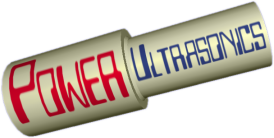Along with many other thing in life, ultrasonic systems can only be controlled if you can measure what they are doing. There are three important parameters: resonant frequency, resonance mode and vibration amplitude. These are normally tested for a complete ultrasonic system - transducer, booster (if used) and sonotrode. The resonant frequency can be determined electronically from the power supply to the transducer, ideally using equipment which scans through a range of frequencies so that multiple resonances can all be measured.
Finding out the vibration mode-shape and amplitude is more difficult. How do you measure movements so small and so fast? The traditional method is to gently touch the sonotrode with the fingertips and feel the vibrations (it's a kind of oily sensation). Hardly quantitative, but surprisingly effective for comparing the vibration amplitude in different areas. Just be careful not to press too hard, or it will burn! For safety reasons this method cannot be recommended. A safer traditional option (for flat surfaces only) is to set the surface up horizontal and sprinkle talc on it. The talc flows over the surface from areas of high amplitude to stationary or low amplitude regions.
Modern methods include non-contact sensors working on capacitive, inductive or optical principles. These should give quantitative results (after calibration if required) but tend to be expensive - at least compared to talc or touch! The other disadvantage is that you can usually only measure the amplitude perpendicular to the surface (in-plane movement is ignored) and only at a single point.
The "Rolls Royce" of ultrasonic measuring systems is ESPI (electronic speckle pattern interferometry). The system developed by Loughborough university is capable of quantitative amplitude measurement in three orthogonal directions over the complete system.
